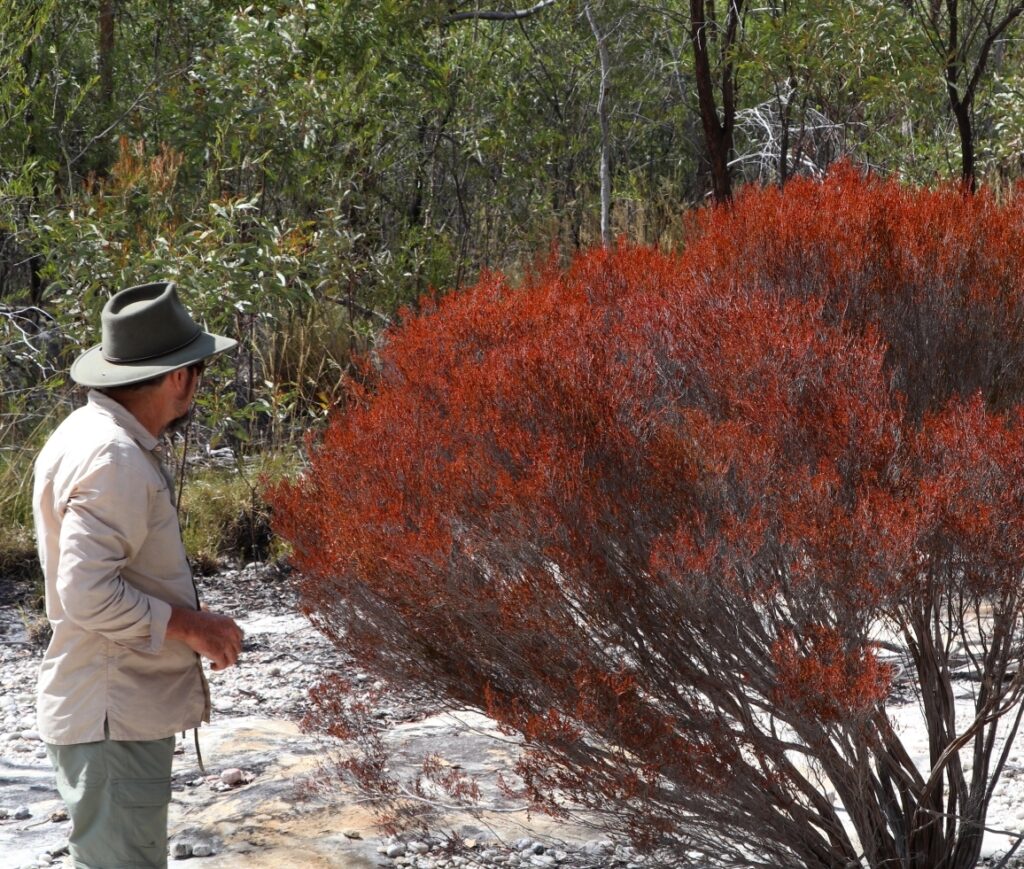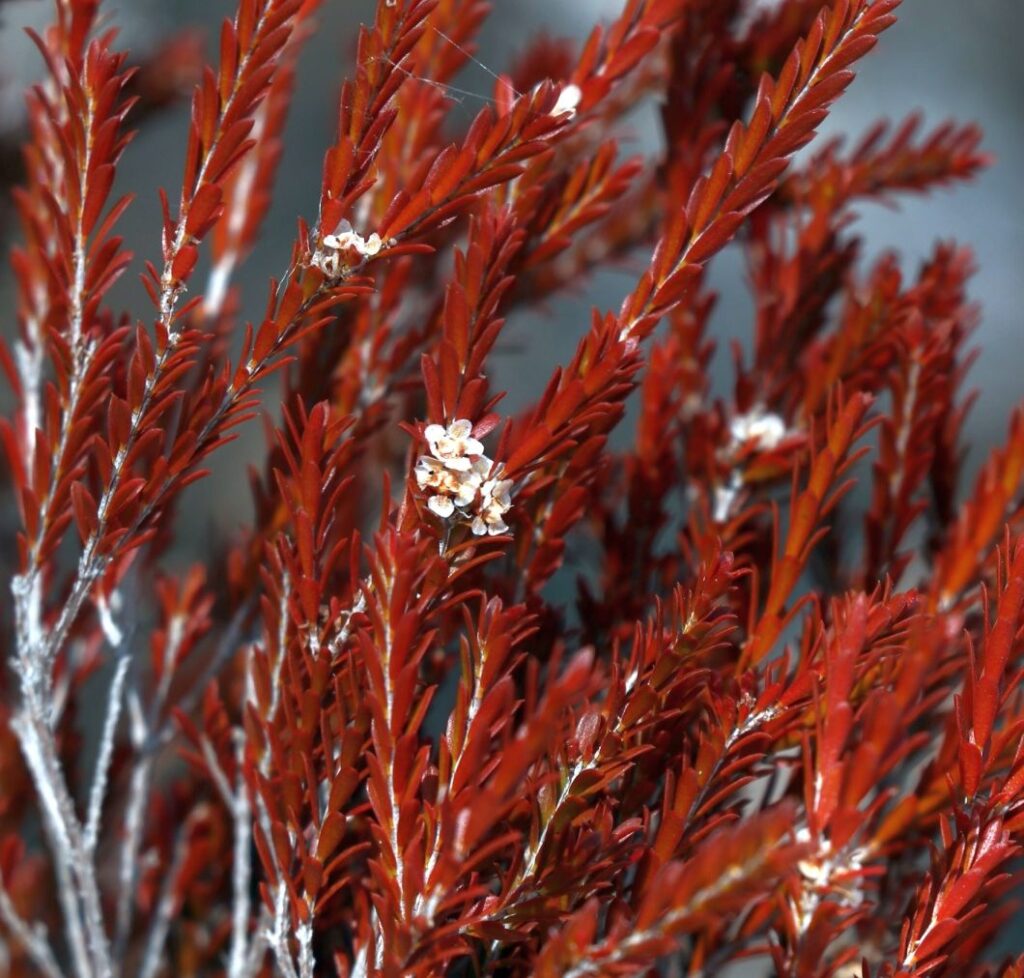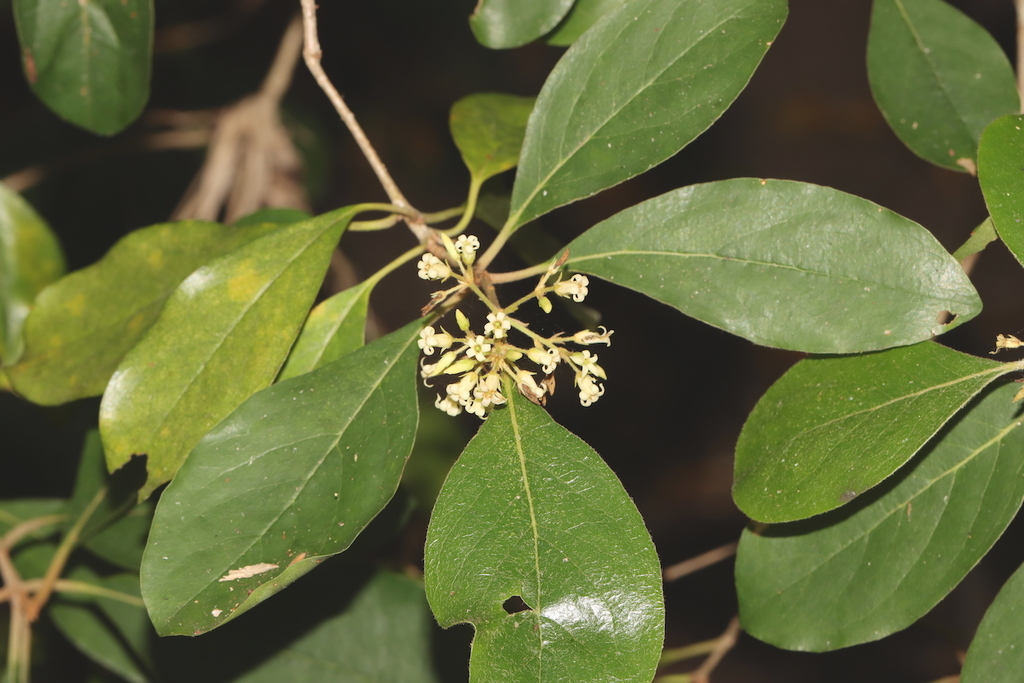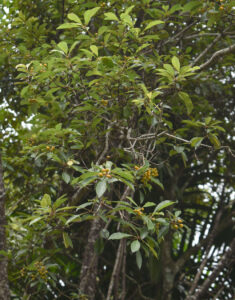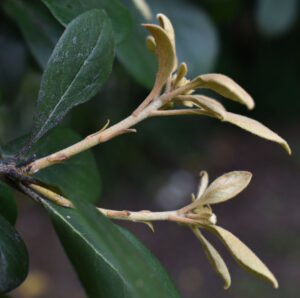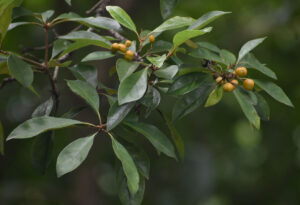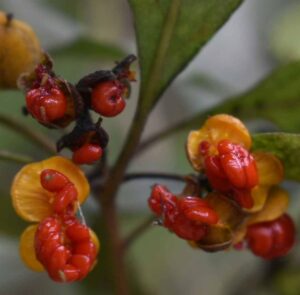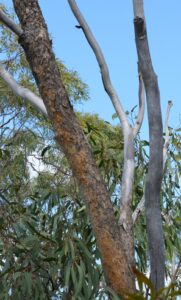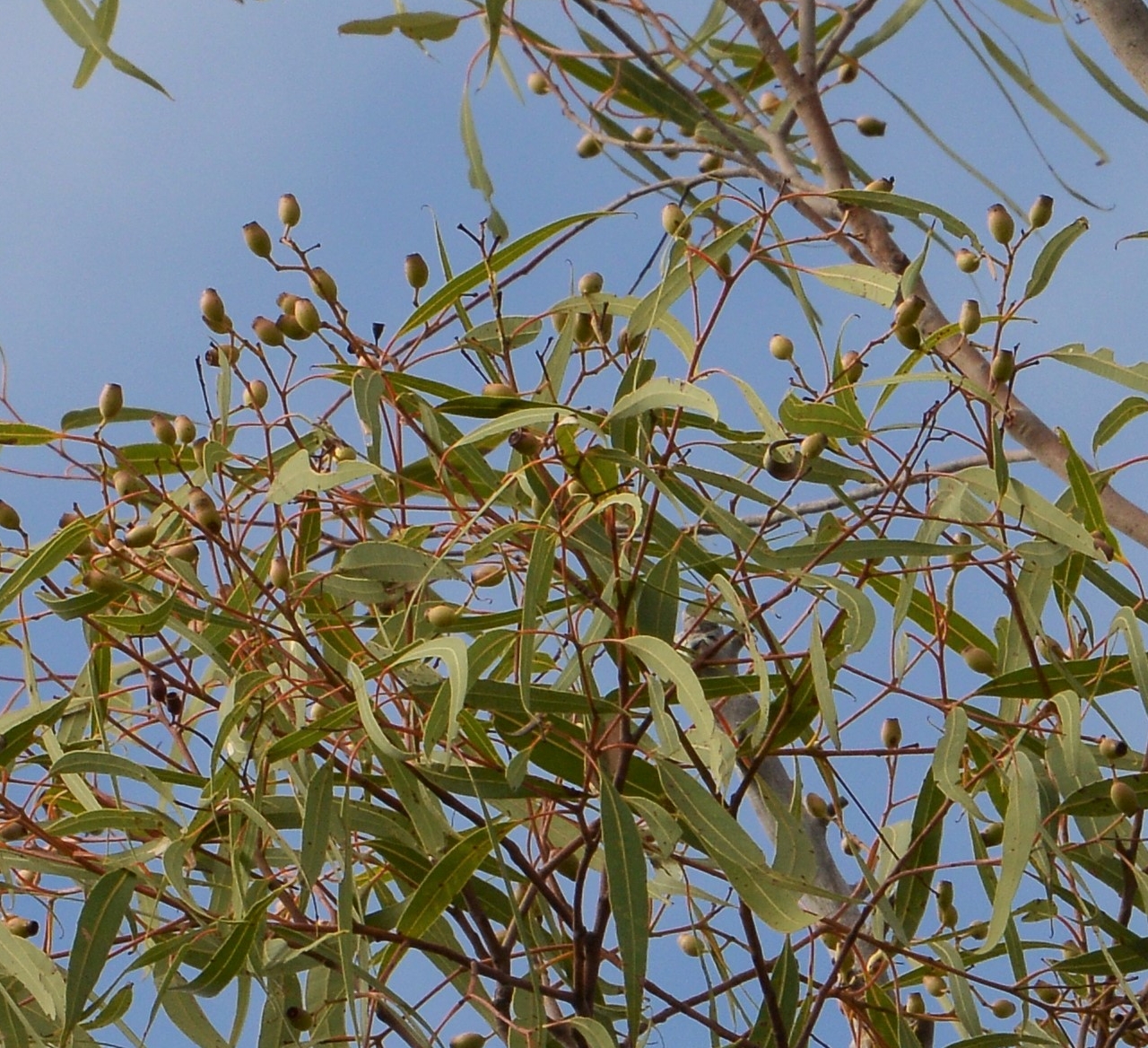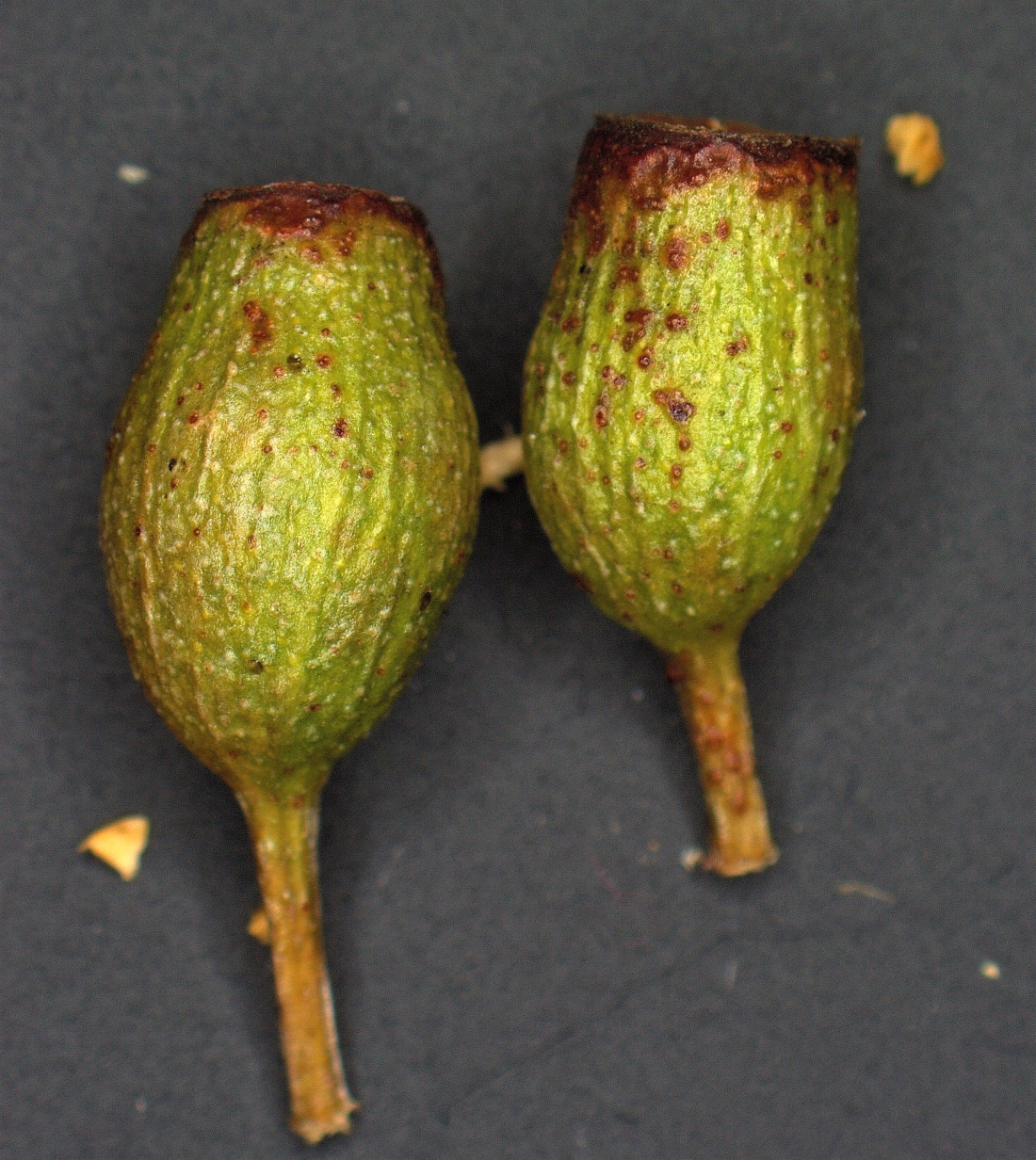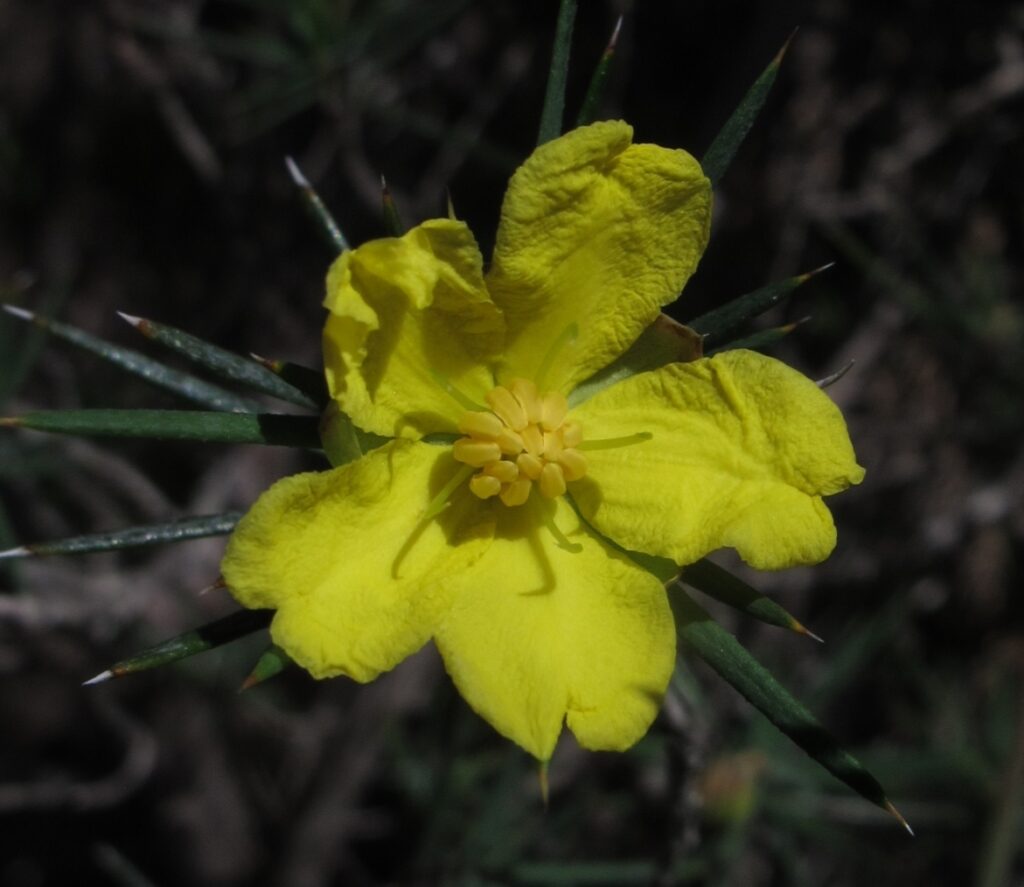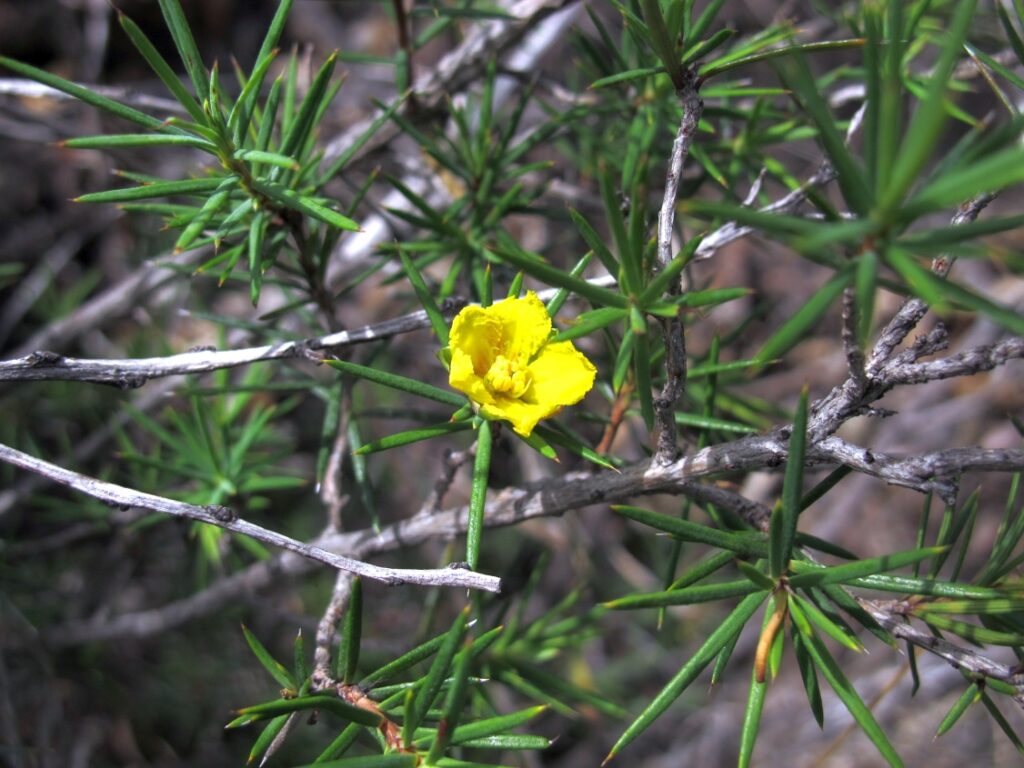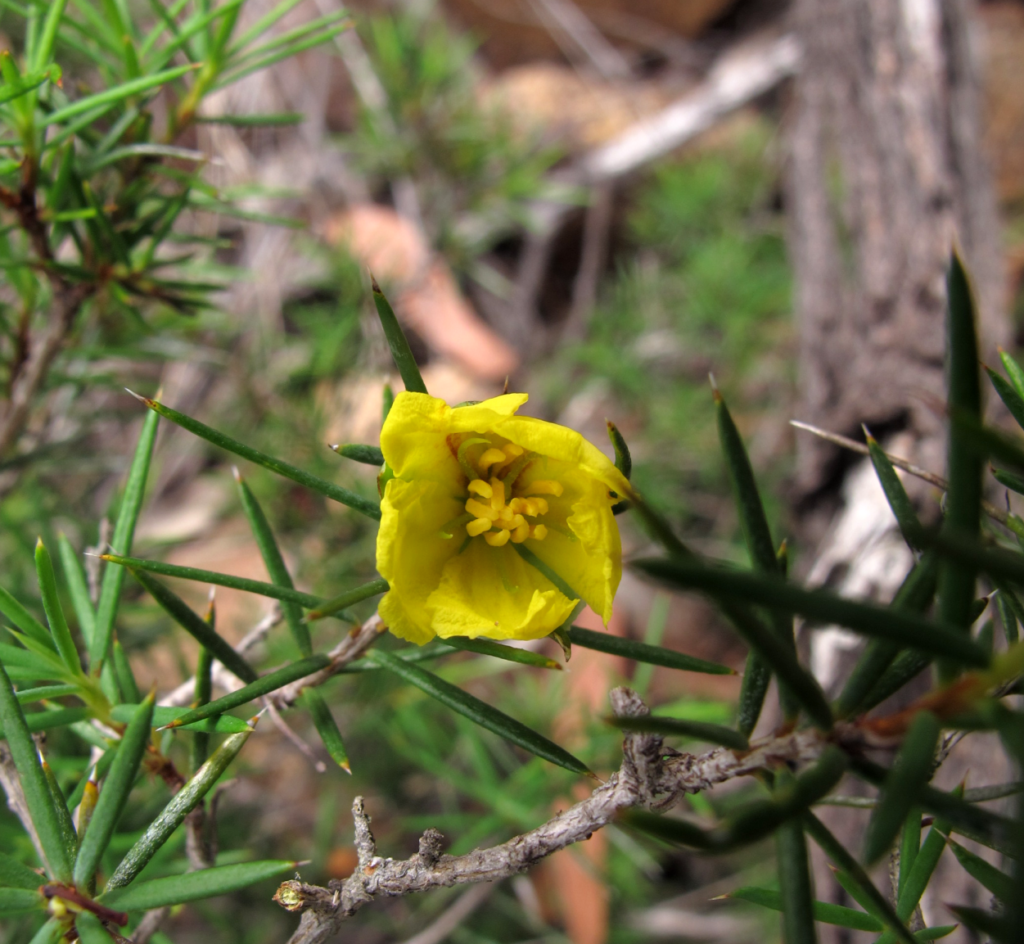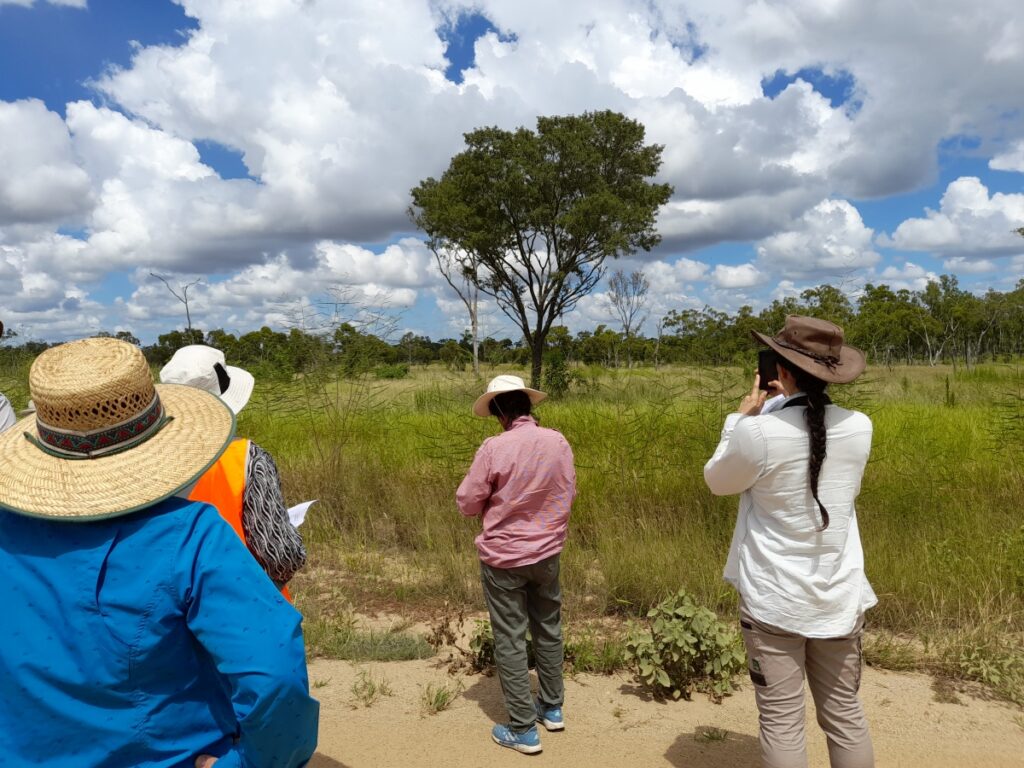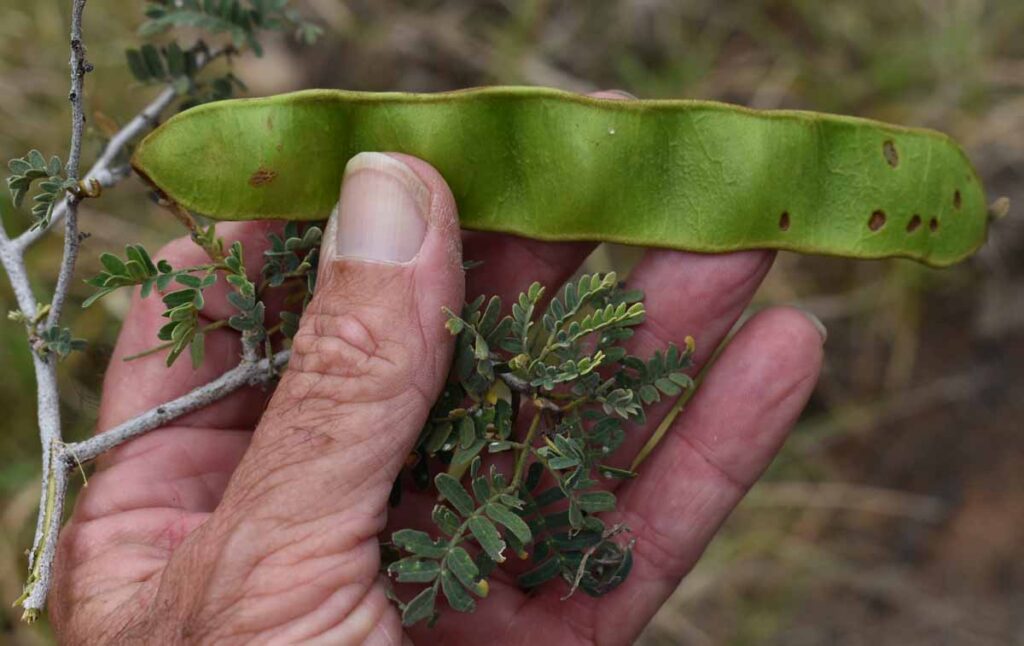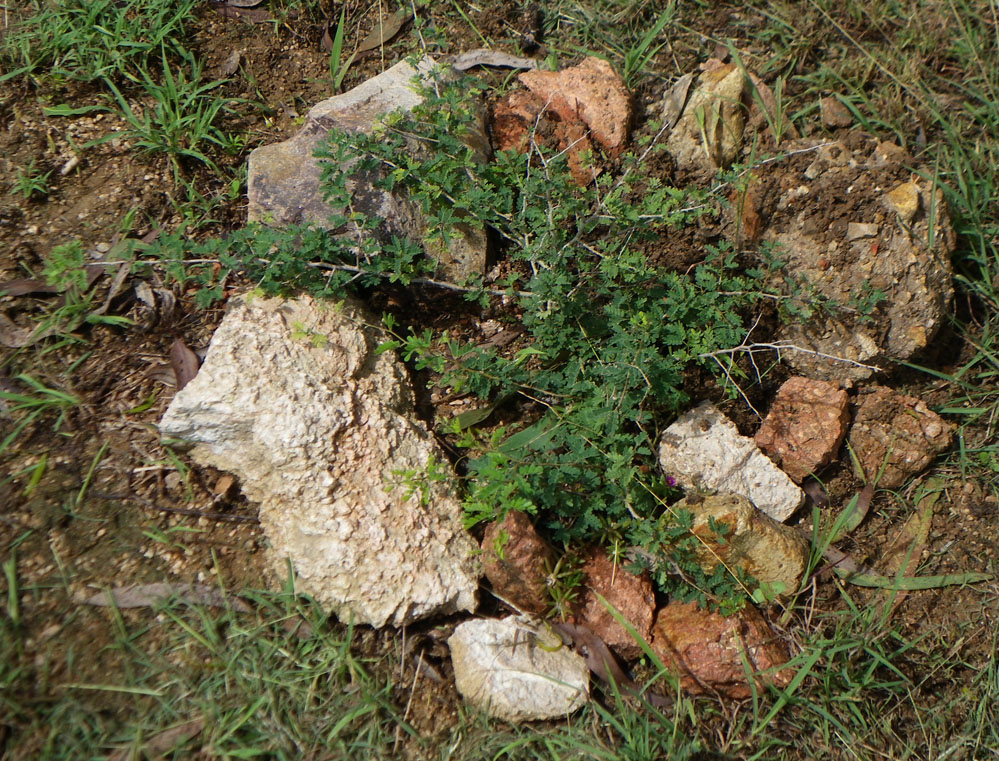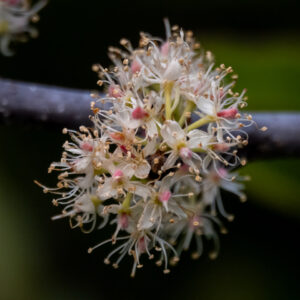
Greg brought a specimen of Cynometra iripa to our July meeting, possibly the first-ever mangrove species in our group’s long-running ‘show and tell’ tradition – thank you Greg! And the Cynometra iripa Greg has grown at home (photo below) might be the first ever cultivated in a Townsville garden?
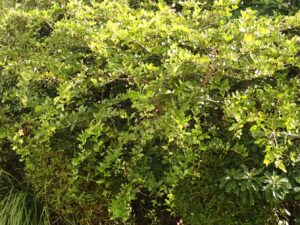
Cynometra iripa (Fabaceae), commonly called Wrinkle-pod Mangrove, has a wide natural range along the coast of Queensland and the Northern Territory, typically growing at the landward side of mangrove forests in places with some freshwater inflow.
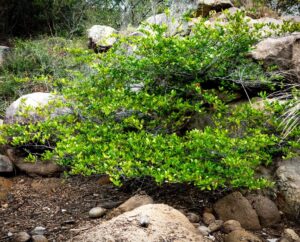
Cynometra iripa is usually a spreading shrub or small tree like this one (photo above) spotted by Claire and Gavin at Magnetic Island, although it has been recorded up to 8 m tall in some places.

Cynometra iripa has compound leaves with two pairs of leaflets (photo above) or sometimes a single pair. Helpful for identification, the central vein of each leaflet is slightly off-centre (photo below).

Attractive clusters of small white flowers produce woody pods (photo below) that have a wrinkly surface as the common name suggests .
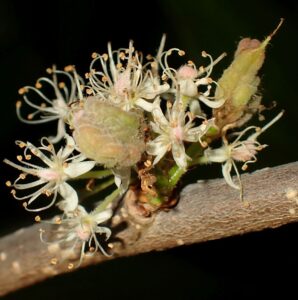
At maturity these wrinkly pods are buoyant and their distribution is assisted by water currents. They are sometimes found washed up at the tideline on our local beaches (photo below).

Two other native Cynometra species have been recognised in Australia, including the new species C. roseiflora found only on the Mossman River. For more details see Cooper, W.E. (2015) A taxonomic revision of Cynometra L. (Fabaceae) in Australia, available here.
